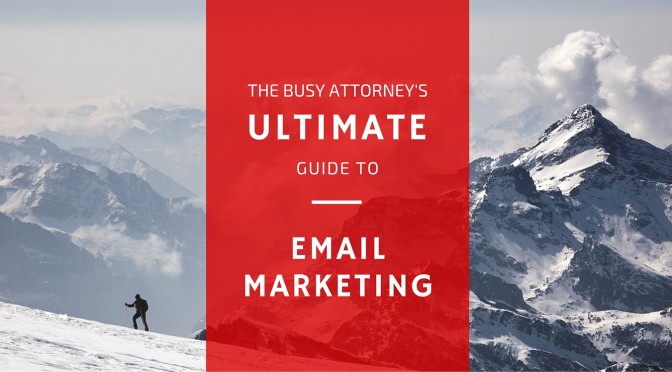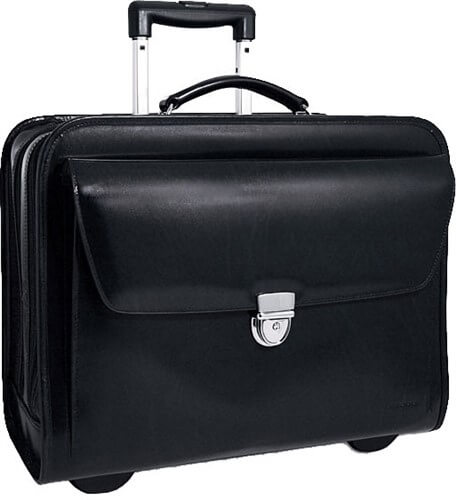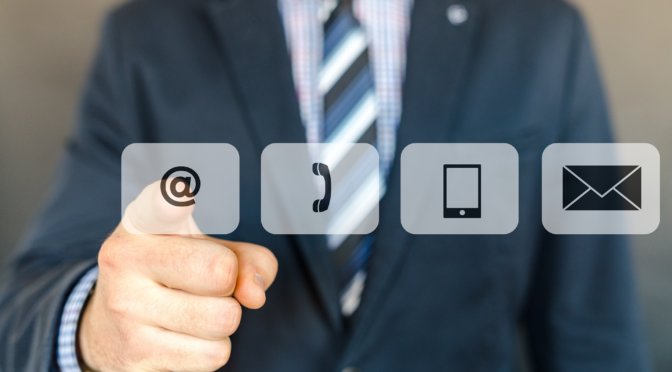I am not a lawyer. There. I said it. But I am married to a wonderful employment attorney who’s just recently hung her shingle. Like most solo attorneys out there, she’s found that building a client base is a constant exercise in hard work, ingenuity, consistency, and persistence.
I happen to be a really nerdy guy that has a background in building digital marketing platforms, so we sat down one night to figure out what ONE THING we could focus on that could get her the most bang for her buck in terms of getting in front of her ideal clients right now, and staying top of mind for when they actually had a need for her help.
We tossed SEO, as you’re not going to get to the first page in Google for anything but your name in the first few months of starting a firm. Anyone that tells you otherwise is peddling snake-oil. So what’s one to do when faced with the long-game that is internet marketing? Well, you have to get a little scrappy, and go places that most of your competitors won’t.
I’ll share what we came up with, and walk you through every step of putting this in place for you. And as long as you’re not an employment attorney in Southern NH, I’ve been given the green-light from the Mrs to let you in on the goods.
The Case For A Weekly Newsletter Over Say, Twitter or Facebook
The one constant over the last 20 years of the internet (besides cat photos of course) is email. Everyone has an email address. Everyone checks their email multiple times a day. Everyone gets a nice little dopamine kick every time an email comes in and their phone beeps or vibrates in their pocket. In short, it’s the most ubiquitous way to insert yourself into a person’s weekly routine.
But you know all that. The real beauty of an email newsletter is twofold.
One, email is easily shareable. We’re used to forwarding an email, and we don’t have to leave our browsers to do it. No fancy “Share This” buttons, no URL shorteners, just a simple forward to a friend is all it needs to spread, and spreading is what you really want right now.
Two, email generates a feeling of reciprocity. Our species has a hyper-developed urge to return favors given to us. If you’re able to provide enough value to your readers on a regular basis in the form of insights, aggregated interests, etc, when it comes time to seek legal advice in your area of expertise, you’re the one they’ll have that urge to go back to.
I promised two, but I’ll give you a bonus reason. Email is not controlled by another company’s desire for you to pay them money in order to reach your audience. It’s been shown that Facebook posts are seen by less than 6% of a brand’s followers, and internally, Facebook wants to see that number drop to 1%-2%. Why you ask? Because they need money in order to satisfy their share-holders, and the only way to do that is to be the gate-keeper (read: toll-keeper) between you and the audience you’ve painstakingly built on their platform.
So if you want to actually build that audience, you’re now going to have to use their Facebook ads platform to do so.
Own your audience! An engaged newsletter subscriber is orders of magnitude more valuable than a Twitter follower or Facebook fan.
[Tweet “An engaged email subscriber is orders of magnitude more valuable than a Twitter follower or Facebook fan.”]Now that begs the question, who should your audience be?
Choosing an audience
Deciding who your newsletter is for is largely dependent on how you define your ideal client. In the example of my wife’s employment law firm, her ideal clients are small business owners and HR managers in larger companies. For her, it makes sense to market directly to those folks with updates about the changing HR landscape.
But, when coming up with your newsletter audience archetype, clients aren’t the only option. In fact, in many cases, you may want to skip writing for clients at all, and instead focus on the natural referral providers that make sense for your practice area. For example, if you focus on trusts and estates, you might consider writing a weekly update for financial advisors in your state, that would keep them in the know, and ready to hand out your business card if their clients have more complicated estate matters that the financial planner can’t handle on their own.
Choosing your content
Now that you have your audience decided, it’s time to figure out what content we can provide on a regular basis that will ensure that your email is always valuable to that audience.
It’s tough starting from a blank canvas, so I’ll outline a few items that should work for most audiences. But don’t be afraid to get creative and get inside the mind of your ideal client. Remember, this is about them, not you. If you have other ideas, please share in the comments!
An Editorial Forward
I wouldn’t spend more than one paragraph on this. Give the readers an overview of what they’ll find in the update, and perhaps a light call to action. Suck them in.
Interesting Reads
You no doubt spend a lot of time reading the latest news related to your practice area. When you come across an article that you want to share on twitter, place it in your email template as well. Be sure to add a one or two sentence takeaway from each that informs your reader why it matters to them.
If you want to link to one of your own blog posts, that’s fine, but limit it to one per newsletter. You don’t want to come across as spammy. This newsletter isn’t meant to drive traffic to your blog, it’s about keeping your readers informed.
Events
Curate a list of networking events in your geographic area. Make sure to ask readers to let you know about any events they’re sponsoring or attending as well. Highlight the events going on that week, and then list out a calendar of events spanning the next month.
Reader Questions
Solicit questions from your readers. If they have a particular problem that others in the group might be interested in, ask if you can publish your response to the group. Obviously, you should be careful to disclaim that the email doesn’t constitute legal advice.
Blog Posts
If you do want to have a place for all of your posts from the week, place them in their own section, and toward the end. Follow a similar format to the “Interesting Reads” section above.
Footer
This is essentially your business card. Make sure your readers have a way to contact you, and how to find you on your various social media accounts. Also, this is a good spot for a disclaimer if you have anything in the newsletter that might be construed as legal advice. Also, a good place to let folks know that replying to you doesn’t constitute an attorney-client relationship.
Constructing your list
Normally, in the world of email marketing, there’s a hard and fast law that you never email someone that hasn’t specifically opted in to receive your newsletter.
For this one time, and this time only, I’m going to advise ignoring that rule, mostly because we’re going to be following the intent of law, if not the letter.
We are going to be creating a weekly newsletter that your readers will WANT to look through every week. If we don’t reach that level of awesomeness, then this whole endeavor won’t be worth it anyways.
So, for your initial list, we’re going to build a list of people you know in person that would genuinely be interested in your content. This is not a “dump my address book” into a list type of exercise. This is a painstaking process of going through your address book, your Linkedin contacts, your Facebook friends, etc and asking the following questions:
- Does this person know who I am personally?
- Does this person fit my audience archetype?
- Would this person likely look forward to this email every week? (Be brutally honest)
If the answer is “yes” to all three (and a real “yes” not “maybe” or “possibly”, a hard and fast “yes”), then you want to add them to your list in the following way:
- Create a spreadsheet in google docs. You can do this in excel as well, but we’re going to do this using Google Docs because everyone has access to that tool, and particularly for marketing activities like this, Google Docs can be a lifesaver.
- In Column A, put the email address. In Column B, put the person’s first name.
- Rinse and repeat step 2 for every person that fits.
When you’re done, we need to download your list so we can import it into your email provider of choice. To download the file in the correct format in Google Docs, click File> Download as…> Comma-separated values (.csv, current-sheet). Remember where you place that file, we’ll need it later.
Now that we have a list, let’s get down to the nitty-gritty.
Tools
There are a TON of email providers out there. There’s MailChimp, Constant Contact, Emma, Campaign Monitor, and I could go on and on and on. They’ll all work and if you have one of them in place already, stick with it. Better to work with the one you know. If not though, I always recommend MailChimp for two reasons. One, it’s free for up to 2000 subscribers, which is more than enough for every firm I’ve ever worked with. Two, it has all of the features you’ll need, is easy to use, and it works on every device so if you have a few minutes of downtime, you can work on your next week’s digest without having to bust out a laptop.
We’ll be walking through how to implement this using Mailchimp.
Setup
Head on over to mailchimp.com and sign up for their free plan.
Once you create the account, you’ll receive a confirmation email. Just follow the link in that email to continue with the setup. Fill out the form related to your business size and whether you have a list (feel free to select “No” for now, we’ll build one later) and hit submit. You should now be staring at your Mailchimp dashboard.
We’ll start by creating an empty list. Click on the “Create List” button on the dashboard to get started.

Creating Your First Email List with MailChimp
Just click “Save” and congratulations, you now have your first email list.
Importing Your List
Now that we have a list, we want to make sure all of our readers receive it. We need to import them from the list we created before. So go ahead and click on the import subscribers link, and then select “Import From a CSV or TXT File.”

How to import subscribers from a CSV file in MailChimp.
Now, find the file that you downloaded in the “Constructing your list” section above. Once you import that file, you should see a screen where Mailchimp is going to match up the columns in your list with the custom fields that Mailchimp uses to customize your emails to each reader.

Selecting which file to import your subscribers from.
If it works, it should look like this:

Making sure your data lines up with MailChimp’s dynamic fields.
Once you click then ‘Next’ button, you should see a confirmation screen. The defaults are fine, just click ‘Next’ to complete the import.

Finalize your import.
Congratulations! You now have an email list. Let me be the first to say that this immediately puts you in the top 5% of solo attorneys in terms of internet marketing expertise.
So pat yourself on the back, and now let’s talk about how we actually send to the list, and come up with a plan to make it a regular part of our marketing strategy.
Building your first campaign
Alright, now that you have a list, we need to build a campaign. Campaign is just another word for sending out an email to your list. To start the process, click on “Campaigns” in the sidebar then in the dropdown on the next page, click “Regular campaign”.

Starting your first campaign with MailChimp.
When you do that you’ll be placed into MailChimp’s campaign creation workflow. In the first step, just select “Send to entire list” and click “Next.” The next step is where you start to define what this particular campaign (or mailing) is.
You’ll need to create a name for the campaign. I would chose something that can be easily modified in future campaigns since this is going to be a regular thing. In this example, I chose to name it after the newsletter, and then give it an issue number. That way, in the next campaign, all I have to do is change the issue number and they’ll be easily identifiable. You could use the date you plan to send it instead of an issue number too. I’ve seen that work nicely as well.
Once you have the name, it’s time for the subject line. Now I’ve always found the subject line to be a little hard to write before you’ve written anything about the content. So for right now, put in something generic about your newsletter and move on. We can change the headline later (before we send) to make it more specific to the actual content you put in the newsletter.
And the final change I’d suggest is putting *|FNAME|* *|LNAME|* as your “To:” field. Whenever you see *|SOME_CODE|* it means Mailchimp will replace that SOME_CODE with the data in your list that matches “SOME_CODE”. In the case of FNAME and LNAME, that’s the first name and last name of each recipient that was matched up when you imported your list.
As for the tracking section, you can leave that at the default values. If you use Google Analytics, you can go ahead and check the box there so that the campaign name will appear in your Google Analytics account as well.
Here’s what your screen should look like:

How to choose your campaign options.
Choosing a Template
Once you’ve set up your campaign, it’s time to decide how it will look. MailChimp provides a number of Basic Templates which allow you to build out your email, and they also provide pre-designed themes that have a bit of design to them.
I would stick to single column layouts to minimize complexity, but find one that works for you. It’s hard to go wrong here, so have fun! If you’re concerned about which one to pick, click “Themes” and search for “Minimal”. It’s organized into nice sections that you can customize to match the content you decided to include earlier.
While a template is one of the fun parts of setting up your marketing campaigns, be careful not to fall into analysis paralysis. There are a number to choose from, and you can always change it later. But for now, just pick one that’s simple and clear. After all, you want your readers to focus on what you’re writing, not the template that wraps it.
Writing your first email
And here we are, staring at a blank canvas. Intimidating right? I felt the same way. It gets easier, particularly once you find a format that really starts to resonate with your list, but for now, we wrote up an epic newsletter template that you can use to get yourself going on the right track.
Don’t get stuck on what to write.
We took care of the ideas for you, so you can focus on getting started. Click that green button there and you’ll have that template to use for whenever you’re ready to write your first newsletter.
Scheduling your first campaign
You’ve now created your first email and you’re ready to hit send. That’s awesome! Now, when it comes to sending email marketing campaigns, you don’t want to just hit send when you’re done with it. You’re going to want to schedule the campaign to optimize for actually getting read.
Let’s face it, while our goal is to create an email marketing newsletter that readers actually look forward to, folks are busy. Think about the day-to-day business of your clients and try to schedule the campaign to go out when your readers will be able to sit down and read it.
For example, if your clients are HR managers, mid-afternoon on a Friday might be great, as they might be killing a bit of time waiting to punch the clock for the weekend. Every list is different, so feel free to experiment.
Sending your first campaign is only the first step…
Sending your first campaign is a really really big deal. You should be proud. You put yourself out there, and that’s the first step to allowing you and your firm to be found online.
Now, let’s take advantage of that momentum and talk about how to grow your list and how to keep pumping out great content.
Getting new subscribers
That first group of readers is going to be the easiest. You already know them. Getting folks you don’t know to sign up will be a lot harder. But alas, we’ll talk about a few ways to get started. The first two require little to no technical ability. You can start doing it today and to be quite honest, you’ll likely have your best results there.
Ditch the business cards, sign them up for your list in person.
We all know the value of meeting industry folks face to face. Attorneys are some of the best networkers I’ve ever met.
All of those events, the hours of chit-chat, the passing of business cards, all with the hope that one day someone will remember your firm when they have the need.
What if they didn’t have to think back to that charity dinner 18 months ago, and instead only had to remember the person that emailed them two weeks ago?
That’s the real power of email marketing. So now that you have a newsletter, you can use it to stay in front of all of those people you’re investing time to meet with.
So rather than saying “Here’s my business card, call me if you ever need help.” you can say, “I have a newsletter that goes out every other week or so that will help you with <problem they might have>. Would you like to sign up? It’ll only take a few seconds.” And then whip out your phone, go to Lists, choose your main email list, and then in the upper-right corner click on the button to add a subscriber and just enter their name and email address. You could even hand them the phone to have them enter it themselves. Done!
Or, if you don’t want to have to pull out your phone, just keep a pen handy. When you ask about the list, if they say yes, make a quick note on their business card, then manually invite them to the list later that evening when you get home.
And don’t forget to email them personally to say thank you for signing up.
Ask for forwards…
Your loyal readers are also a great source of new subscribers. After all, they’ve already gotten to know you and the value you’re providing them. And, like most networked professionals, they probably know others just like them that might also benefit from your newsletter.
So, once a month, or once every other month, depending on how often you email your list, let everyone know that you’re on the lookout for new subscribers. Let them know the effort that you put into the list. Maybe even pull on their heart-strings a little bit by reminding your readers of all of the value they’re getting FOR FREE. And then ask if they’d take 30 seconds and consider forwarding your email to friends or colleagues that might also benefit from the information you send out.
MailChimp has a handy little merge tag for a forwarding link that will allow your readers to forward your email and have the recipients be prompted to sign up for your list as well. Just highlight your call to action (the sentence that’s asking folks to sign up) and click the link button. Select “Web Address” and set it to *|FORWARD|*.

Creating a link that will help your readers forward your campaign to a colleague.
Mini Contests
Another way to entice folks to forward your email is to run a little contest. For example, you could raffle off say, three $20 amazon gift cards, or maybe a copy of a book that’s pertinent to your audience. Then ask them to email you with the names of folks they forwarded your email to. For each one that signs up, enter them in a chance to win.
Worst case, you have 3 folks sign up and you spent $60. Might seem expensive, but the beautiful thing about email marketing is that you have time to make that money back. If even one of those clients calls you for a 30 minute consult in the next 18 months, you’ve likely made your money back.
Get your website to drive new subscribers…
It’s fairly easy to get a signup form onto your website. If you use WordPress, just add the Mailchimp plugin. Follow the instructions to add the form as a widget in WordPress.
If you use AmazeLaw, just go to Email Marketing, and click “Connect Mailchimp” button and you’re done.
But, like sending out that first campaign, adding a form to your site is not enough. You also need to actively promote your list in order to entice new signups.
Obviously, “promote your email list” is the type of pithy advice run away from here at AmazeLaw, so here are some easy, concrete ways to promote your new list on your own website.
Landing Page
A landing page is just a dedicated page whose sole purpose is to get a visitor to perform an action. In this case, the action is to get someone to sign up for your email list.
Create a page in WordPress or AmazeLaw, and give it the same name as your list. The content is pretty simple, you don’t even need a picture:
[Headline: Big benefit they’ll see from signing up]This is a paragraph about what your life will be like after you’ve signed up and are reaping said benefit. Imagine how easy life will be. No more worrying about missing the latest news and getting caught unaware.
Here’s what you can expect:
- Easy to digest updates about [your practice area]. No legalese! We promise!
- Curated industry news so you don’t miss the best content out there.
- …
- No spam. Ever.
Pretty easy, huh?
Protip: Add a link to your landing page in your email signature with a simple call to action. Something like “Sign up for our free bi-weekly employment law update.” or “Free estate planning tips in your Inbox every week.”
Post/Page Footers
Having a signup form on your contact page, or home page is a great first step, but often times, visitors to your site won’t be coming through the front door. A good percentage of your traffic, particularly search traffic, will likely go directly to your blog posts where visitors are looking for a very specific answer to the problem they’re searching for.
They’ll likely never see your homepage, and unless you do a bunch of cross-linking (linking to other posts or pages on your site), they may not see another page before they move on with their day, armed with the answer to their query.
But what a perfect time to start a relationship. By answering their question you’ve provided value and built trust. It’s the perfect time to remind them that, hey, if you want more quality advice or analysis just like this, sign up for my newsletter!
So, long story short, at the bottom of every blog post, add a simple paragraph that explains that if they found the post useful, that they can sign up for your newsletter and add a link to your landing page where they can sign up.
Keeping it going…
Alright, time to recap. We’ve gone from nothing to:
- Signed up for a free MailChimp account.
- Created our first email list
- Built and sent our first email campaign
- Set up our website to attract new subscribers by using landing pages and blog post footers
- Learned to leverage our existing contacts for new referrals
Staying consistent
Now that you’ve setup your email marketing essentials, we need to create a system for consistently delivering little knowledge bombs to your subscribers.
And consistency isn’t just how often you email your subscribers, but your ability to consistently deliver something that your readers value.
Steve Martin quipped in his autobiography that it wasn’t the ability to kill it on a given night that set the great comics apart. After all, most comics could kill it every once in a while with the right audience. It was the comics that could produce a great show night in and night out that were truly successful.
And just like Steve Martin, you need a system to deliver consistent value.
How do we do that?
Creating a schedule you can stick to…
We talked a bit about scheduling your campaigns so your customers are most likely to read your posts. Now let’s talk about how to schedule your campaigns so that they fit within the constraints of a busy attorney’s calendar.
You know it, I know it, so let’s not pretend that your email list is going to top your list of priorities for the week. So let’s just acknowledge it up front and figure out how to move forward anyways.
If you’re like me, you might tend to overestimate what you can accomplish, and that’s doubly true for todo items that aren’t sitting atop your priority list. So, if at this very moment, in your excitement over setting up email marketing for your firm (you’re totally psyched right? Right?!) you think that you could handle a weekly email campaign, let’s adjust that right now. Take your totally logical and reasonable estimate and cut it in half. Make it every two weeks, or make it monthly if your estimate was bi-weekly.
This will help you avoid the trap of committing to an unrealistic goal, missing it, and then bagging on the whole thing when a month has gone by and you missed your deadline.
And now that you’ve given yourself that break. Commit to it. You have no more excuses.
Set a recurring calendar reminder for 5 days prior to your campaign. Spend 30 minutes compiling your content. Don’t worry about being perfect. Just get a bunch of content in there.
Three days prior to the campaign spend another 30 minutes refining that campaign to make sure that the content is actually worth interrupting your audience for.
Forget for a moment that you’re an attorney and that you’re actually interested in the law. Forget that you want more clients. Forget every inclination you have to talk about yourself.
Just imagine your ideal client reading your email and constantly asking the question “What’s in it for me?” and “Why do I care?” If a sentence or bullet point isn’t written to answer those two questions, cut the sentence or rewrite it so that it is.
And finally, one day before your campaign is to go out, spend 30 minutes and perform the following exercise:
Read the following articles that summarize some simple techniques for coming up with headlines that inspire action
10 Sure-Fire Headline Formulas That Work
41 Classic Copywriting Headline Templates
Now, set a timer on your phone for ten minutes. Turn off your wifi, and just start listing out subject lines for your campaign. Don’t worry about how good it is, just get it out and move on to the next one. The goal here is quantity.
When the timer goes off, look over your list. From the perspective of your ideal client, which one do you think would inspire them to skip the ‘delete’ button and actually read that email?
There’s your subject line.
For example, here are 10 subject lines I came up to use in an email that would describe this exercise using those formulas. Which one resonates with you?
5 subject line secrets that will get your email read…
7-Minute brainstorms that WILL get you new clients…
Write subject lines like Don Draper, even if you’ve never written a word of copy…
Send emails that get read 50% more than ‘real marketers’ with 10 minutes of work
Write emails your clients WANT to read…
Don Draper couldn’t beat your copy if you follow this one simple exercise…
5 minutes could mean the difference between being spammy and being awesome
How to avoid writing subject lines that make your email invisible…
Are your subject lines wasting the effort you put into your newsletters?
What professional copywriters do when they can’t think of headlines
That was 10 minutes of work. Some of those headlines are clearly better than others. Some are repetitive, and that’s ok. But you’ll notice, the odds that the first subject line (the one you would’ve used had you not done the exercise) is the best one is slim.
This simple exercise will routinely get you two or three times as many opens on your campaign.
And that means two or three times as many opportunities to get in front of your clients, which means two to three times the ROI for all of this effort you’re putting in.
How to come up with (great) content
It can be hard to come up with something to say week in and week out. And it’s even harder when you only have 30 minutes between client meetings to do it.
So rather than setting yourself up for 30 minutes of staring at a blank page, let’s create a simple system for building up that hopper of great content throughout the week, so when it comes time to write, you just need to pull items off your stack.
First, we’ll need a central place to accumulate all of these notes.
Everyone’s style is different, so I’m sure you can come up with a tool that works best for you. But the whichever method you choose, the key is to optimize for being able to take a note as quickly as possible whenever the thought strikes.
I prefer to use Evernote. I just keep one note and add newsletter ideas to the top of it as I come across them. My wife uses Trello, creating a new card for every idea. I’ve seen folks use Google docs. I’ve also tried using a Word document or even writing in a notebook, but those two options make it hard to access from my phone on the go, or lack the ability to quickly copy and paste a URL for a link I want to remember to share.
So, over the course of the day, any time I think of something that might be worth sharing with the email list, I write it quickly at the top of the note. And at the end of the week, I have all sorts of items I can pull from to write the actual campaign.
What sort of things should you be on the lookout for? Here are just a few:
- Common questions from clients that you could answer in a paragraph or two
- Events that your clients might find valuable (even if they’re not valuable to you)
- If you happen to be attending them, mention that and invite readers to come say hello.
- Legislative changes (but only those that, upon learning about would cause your ideal client to say “Oh man, I’m really glad I know that, I’m going to change X…”)
- Articles that your potential clients would want to read
- Anecdotes that can bring a little levity to the newsletter
- Interactions with readers that could benefit others
- Positive news about those in your readership. Did someone just win an award? Did they get some positive press?
- Take note and share it. And then invite others to share their good news when hey have any.
If you get into the habit of taking note of these tidbits, you should find that when you sit down to write your newsletter, you’ll spend more time figuring out what should be left out, than figuring out what to add.
That’s it!
This isn’t rocket-surgery. It just takes patience and practice. If you have any questions, please let me know. And if you take this advice and create your own newsletter, be sure to add bryan@amazelaw.com to your subscriber list. See! You already have an audience!
Now quick, go write your first campaign. I’ll be here, looking forward to reading it.
Psst! Don’t forget to grab the starter template to get your email marketing started without a hitch!
Further Reading:
The “From” Name: Perhaps Your Most Important Email Marketing Decision
The background on why you want your from name to be your law firm and not your name.
10 Sure-Fire Headline Formulas That Work
41 Classic Copywriting Headline Templates
When you’re stuck and need to come up with headlines or subject lines in your emails, these articles will get you unstuck right quick. It’s like mad-libs, except instead of laughs, you get tons of clicks 🙂











